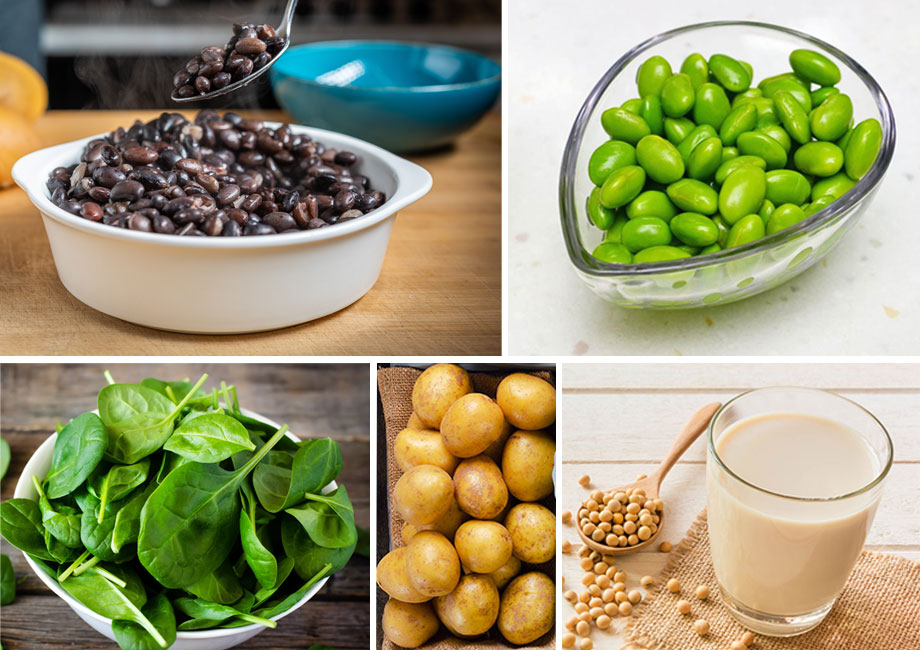Magnesium is an essential mineral that works its magic in a number of ways. For starters, it’s involved in more than 300 biochemical processes1 throughout your body. These processes include regulating blood pressure, muscle function, nerve function, and protein synthesis (hello, muscle mass gains). Like calcium, magnesium is also necessary for strong bones. Your body also needs magnesium to produce DNA and energy.
Recent research suggests upping your intake of magnesium through supplementation can boost exercise performance and improve workout recovery2. Getting more magnesium may also help support better sleep, lessen feelings of stress, promote relaxation, provide relief from occasional muscle cramps, and more.
Sounds too good to be true? It’s not magic, it’s magnesium!
Although the current Dietary Guidelines for Americans doesn’t list magnesium as a nutrient of concern, many healthcare experts and researchers estimate most Americans aren’t consuming enough magnesium.
RELATED: What Should My Macros Be?
How can you make sure you’re getting enough magnesium for optimal wellness? Start by enjoying several servings of foods high in magnesium daily. If you’re unsure what to eat, I—a registered dietitian—put together a list of the top foods high in magnesium, plus how much magnesium to aim for in a day and what to do if you suspect you’re not getting enough.
Medical disclaimer: This article is intended for educational and informational purposes only. It is not intended as a substitute for medical advice. For health advice, contact a licensed healthcare provider.
12 Foods High in Magnesium
Magnesium is found in a wide variety of foods, including nuts and seeds, whole grains, legumes, dairy, fruit and vegetables, and some animal proteins. Plant-based foods are the best sources of magnesium, while dairy, meat, and seafood contain magnesium in much smaller amounts.
You don’t have to go vegan to increase your intake of magnesium, but eating more plant foods in general is an excellent way to support well-being and boost vitamin, mineral, and antioxidant intake.
The Daily Value (DV) for magnesium has been set at 420 milligrams for adults1. As a refresher, the Daily Value refers to the recommended amount of a nutrient most adults should consume per day. In the case of magnesium, the DV is the high end of the Recommended Dietary Allowance (RDA)—more on that in a minute.
Below are 12 of the best food sources of magnesium, plus how much a serving of each food contributes to your magnesium DV.
1. Almonds
One ounce of almonds1 (roughly 23 nuts) provides 80 milligrams (mg) of magnesium, 19% of the DV. Almonds are also a good source of healthy fat, protein, fiber, and vitamin E. Almond butter3 is also a good choice for magnesium, with 45 mg per tablespoon.
RELATED: Different Types of Protein
2. Black Beans
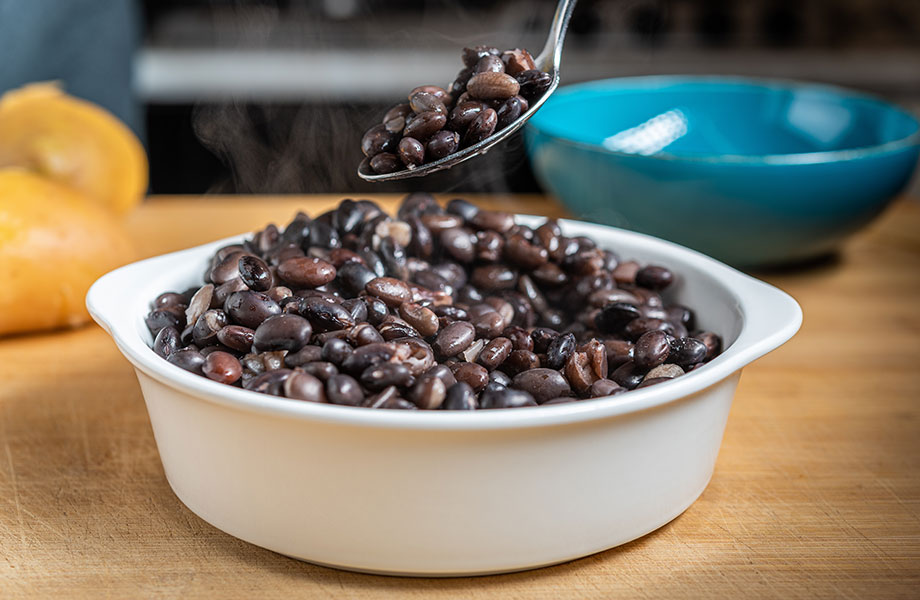
For a magnesium boost, start adding black beans to your salads, soups, quesadillas, taco filling, and other ground meat mixtures. Every half-cup of cooked black beans1 contains 60 mg of magnesium or 14% DV. They’re also a great low-fat source of protein and fiber. Pair your black beans with brown rice—84 mg per cup—and you’ll have yourself a filling, high-magnesium combination.
3. Cashews
Cashews are another excellent source of magnesium and great to snack on or add to your cooking—cashew butter FTW. One ounce of cashews1, roughly one quarter cup, has 74 mg of magnesium or 18% DV.
4. Chia Seeds
Magnesium is yet another reason to load up on chia seeds. One ounce of chia seeds1, about two tablespoons, contains 111 mg of magnesium or 26% DV. Keep a bag of whole or ground chia seeds on hand to make chia pudding, or add it to oatmeal, smoothies, and protein pancakes. Chia seeds are also an excellent source of omega-3 fatty acids.
RELATED: Bodybuilding Breakfast
5. Dark Chocolate
One ounce of dark chocolate4 has 65 mg (15% DV) of magnesium. Treat yourself to a square of dark chocolate for dessert, or combine dark chocolate chips with nuts and seeds for a magnesium-rich trail mix. Choose chocolate that’s at least 70% cacao for the most nutrition and fewer added sugars. Dark chocolate also boasts a higher amount of vitamin D when compared to other types of chocolate.
6. Edamame
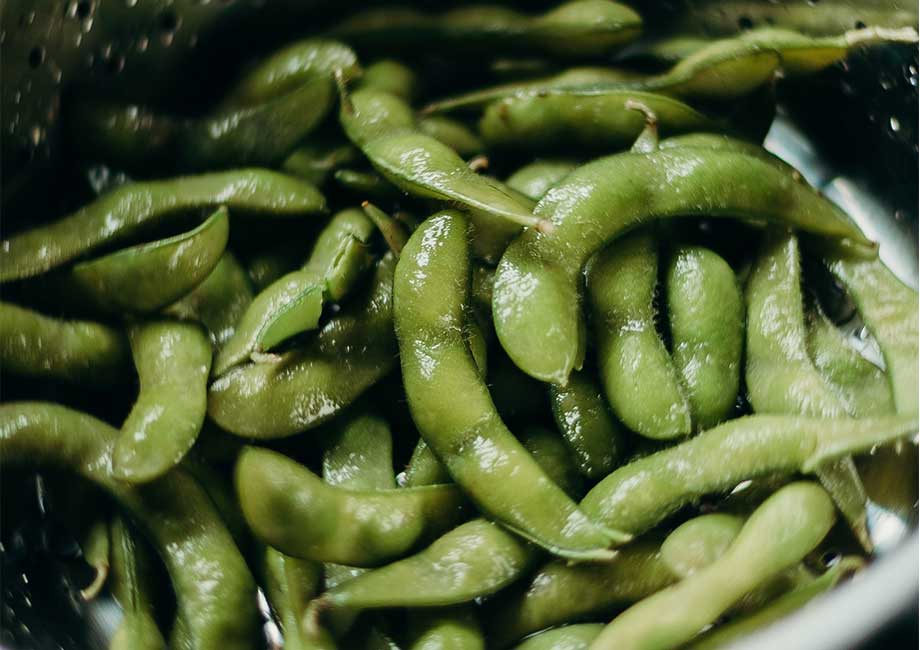
Adding an order of steamed edamame—aka soybeans—to your sushi order can support healthy magnesium levels. A half cup of shelled edamame1 contains 50 mg of magnesium, which is 12% of the DV. Additionally, soybeans may also help lower blood pressure. While there is still more to be studied, they have shown promising results in clinical trials5.
7. Peanuts
Snacking on a handful of roasted peanuts or adding a spoonful of peanut butter to your protein shake adds magnesium to your day. One ounce of peanuts1 packs 63 mg of magnesium (15% DV), and two tablespoons of peanut butter6 has 54 mg (13% DV).
8. Potatoes

No matter how you like to prepare them (boil ’em, mash ’em, stick ’em in a stew), potatoes are a nutrient-dense source of carbs. One medium baked potato1 contains 43 mg of magnesium or 10% DV. For the most nutrients, eat the whole potato with skin.
9. Pumpkin seeds
Lots of plant foods are good sources of magnesium, but pumpkin seeds, also called pepitas, take the cake. One ounce of shelled pumpkin seeds1, which is about three tablespoons, packs 156 mg of magnesium (37% DV). If you don’t like snacking on plain pumpkin seeds, try blending them into smoothies or use them as a crunchy topping on yogurt or oat bowls.
RELATED: Protein Smoothie Recipes
10. Quinoa
Quinoa is a great grain when increasing your protein intake, but it’s also a good source of magnesium and potassium. There’s 118 mg (28% DV) of magnesium in one cup of cooked quinoa7. Cook a big batch of quinoa during meal prep, and add it to salads, soups, and stir fries throughout the week.
RELATED: How Much Protein Do I Need?
11. Spinach
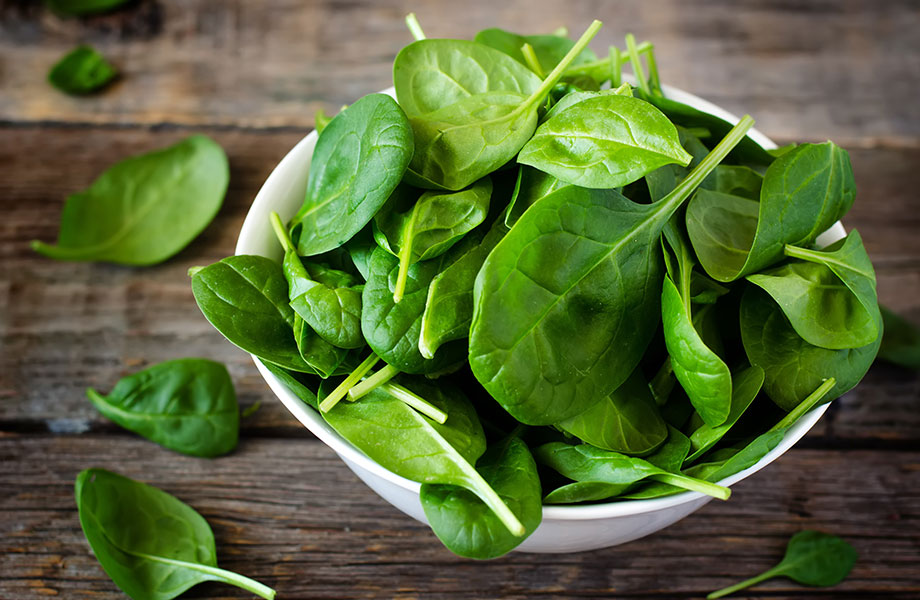
Cooked spinach1 is a potent source of magnesium, with 156 mg (37% DV) per cup. You’ll still get some magnesium of raw spinach, but the nutrients in leafy greens become more concentrated cup per cup when cooked. Sauté a big bunch with garlic and oil for an easy side, or add several handfuls to one pot meals, like soup or pasta, and let it cook down. You can also mix your spinach with a cup of Swiss chard for an extra 29 mg of magnesium.
12. Soy Milk
Consider swapping soy milk for cow’s milk in your smoothies and protein shakes. Although dairy milk contains some magnesium, soy milk has about 2.5 times more magnesium content. With 61 mg (15% DV) of magnesium per cup, plain soy milk1 can help you boost magnesium intake.
Beverages High In Magnesium
After detailing the top magnesium-rich foods, you may be curious about which beverages are high in magnesium. Here’s are a few quick callouts:
- Tea: Fancy a cuppa? One serving (8 fluid ounces) of tea contains about 5 milligrams of magnesium.
- Juice: There are several citrus fruit juices with excellent magnesium content. For example, prune juice has 4.48 milligrams of magnesium.
- Hot chocolate: When made with raw cacao powder, a delicious cup of hot cocoa can net you around 58 milligrams of magnesium.
- Wine: One glass (5 fluid ounces) of red wine contains 18 milligrams, and the same amount of white wine contains 15 milligrams of magnesium. Let’s toast to that!
- Bone broth: Bone broth probably isn’t the most enticing beverage on this list, but one cup holds about 10 milligrams of magnesium.
Magnesium Health Benefits
Magnesium is vital for normal growth, development, and functioning. Because magnesium has a role so many of your body’s processes, it’s also linked to numerous health benefits.
A diet with adequate amounts of magnesium can support:
- Blood sugar control
- Bone health
- Exercise performance and recovery
- Heart health
- Mood
- Sleep quality
- Stress levels
- Weight loss
Researchers have attributed higher intakes of magnesium with a decreased risk of developing chronic disease8, including heart disease, osteoporosis, and type 2 diabetes.
How Much Magnesium Do I Need?
The Food and Nutrition Board (a division of The National Institutes of Health) has set the RDA for magnesium. The RDA is based on the average amount of magnesium most people require each day for good health. Interestingly enough, the RDAs differ slightly from the Daily Value for magnesium.
The current RDA for adults is 400 to 420 mg of magnesium for males and 310 to 320 mg for females1. Pregnancy slightly increases the need for magnesium to about 350 mg per day9. Some health experts and researchers believe the current RDAs for magnesium are outdated and need to be increased.

Researchers from a 2021 study10 claim the need for magnesium increases with body size. Since the average body weight of Americans has increased over time, they propose recalculating the RDA using updated body weight averages for the American population. Using this methodology, the researchers propose increasing the magnesium RDA to 463 to 491 mg for men and 383 to 398 mg for women.
Either way, it’s estimated that the standard American diet lacks magnesium, and most Americans could benefit from eating more foods high in magnesium. Chronically low intakes of magnesium can increase the risk of developing magnesium inadequacy and deficiency.
The National Institutes of Health (NIH)11 recommends the following magnesium daily amounts in milligrams:
| Age | Amount (mg) |
| Newborn to 6 months | 30 mg |
| Infants (7 to 12 months) | 75 mg |
| Children (1 to 3 years) | 80 mg |
| Children (4 to 8 years) | 130 mg |
| Children (9 to 13 years) | 240 mg |
| Teen boys (14 to 18 years) | 410 mg |
| Teen girls (14 to 18 years) | 360 mg |
| Men | 400-420 mg |
| Women | 310-320 mg |
| Pregnant teens | 400 mg |
| Pregnant women | 350-360 mg |
| Breastfeeding teens | 360 mg |
| Breastfeeding women | 310-320 mg |
What is Magnesium Deficiency?
Magnesium deficiency12 is the result of a very low intake of magnesium over time and can range in severity. Symptoms of magnesium deficiency often begin slowly and progressively worsen. Symptoms of deficiency include fatigue, muscle cramps, weakness, abnormal heart rhythms, high blood pressure, and changes to mood and cognitive function.
Certain medications and health conditions, like kidney problems, celiac disease, and Crohn’s disease, can interfere with magnesium status and increase your risk of deficiency. If you suspect your magnesium levels are too low, speak with a healthcare provider to have them tested. Very low levels of magnesium or a deficiency will require supplemental magnesium in addition to dietary changes.
RELATED: Best Magnesium Supplements
Can You Ingest Too Much Magnesium?
If you’re getting your magnesium strictly from whole food sources, you probably won’t have to worry about consuming too much of it. If you take in extra magnesium from food, it’ll be filtered through the kidneys and excreted in your urine.
Magnesium supplements are a different story. Getting more magnesium than your body can handle from dietary supplements can cause adverse reactions. The most common side effects from taking too much supplemental magnesium include stomach cramps, nausea, and diarrhea1.
Risk of Too Much Magnesium
Very high doses of magnesium can cause more serious side effects and increase your risk of magnesium toxicity. Signs that your body has reached dangerous levels of magnesium can include vomiting, flushing, a drop in blood pressure, abnormal heart rhythm, and weakness.
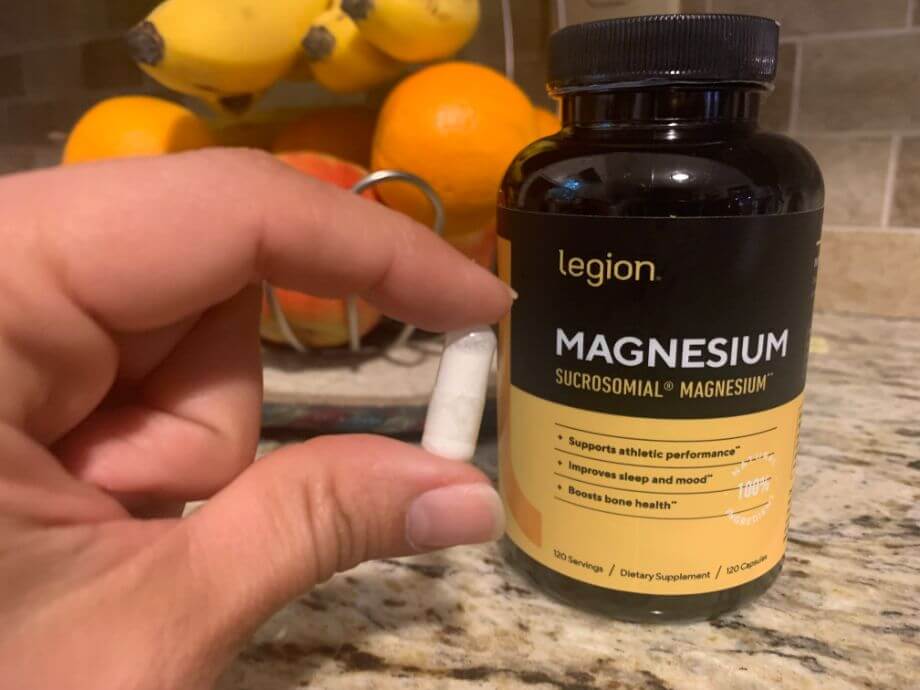
If you take multiple supplements that contain magnesium, you’re more likely to overdo it. There is a Tolerable Upper Intake Level13 of 350 mg for supplemental magnesium, which is the maximum amount of magnesium you can take from supplements without side effects. However, the Upper Intake may be outdated as there is evidence that higher amounts of magnesium supplements are safe and well tolerated.
While everyone can benefit from eating more foods high in magnesium, not everyone needs a magnesium supplement. You should speak with a healthcare provider before taking magnesium to make sure you’re taking an appropriate dose for your needs.
Foods High in Magnesium: Final Thoughts
Magnesium is an important mineral for good health and normal body functioning. Getting adequate magnesium is also linked to numerous health benefits, including improved exercise performance. Whole foods are the best and safest way to increase your magnesium intake. Foods high in magnesium include nuts, seeds, whole grains, legumes, and dark chocolate.
- Most people can support their magnesium levels by eating a healthy diet that includes magnesium-rich foods.
- Plant foods, like nuts, grains, and vegetables, contain more magnesium than meat and fish.
- Your body is designed to excrete excess magnesium from food sources, but getting too much magnesium from supplements carries a risk of side effects.
Foods High in Magnesium: FAQs
How can I raise my magnesium levels quickly?
Eating more foods high in magnesium and taking a magnesium supplement can help raise magnesium levels. If you’re unsure if you’re eating enough foods with magnesium, a registered dietitian can make suggestions and provide a customized meal plan. If you suspect magnesium deficiency, speak with a healthcare provider to have your levels checked.
My RD-approved list of high-magnesium foods includes:
– Almonds
– Black beans
– Cashews
– Chia seeds
– Dark chocolate
– Edamame
– Peanuts
– Potatoes
– Pumpkin seeds
– Quinoa
– Spinach
– Soy milk
Which fruit is high in magnesium?
In general, fruit isn’t the greatest source of magnesium. Bananas and avocados (yes, they’re a fruit!) are your best bet for magnesium. One medium banana contains 32 mg of magnesium, and a half cup of avocado has 29 mg of magnesium, which equals 8% and 5% of the amount you need per day, respectively.
What drink increases magnesium?
Soy milk is the best drink for magnesium. One cup of soy milk contains 61 mg of magnesium, or 15% of your daily needs. Cow’s milk contains approximately 25 mg of magnesium per cup, which is about 6% of the amount of magnesium you need in a day. Cocoa powder is also a good source of magnesium, so drinking hot cocoa made with soy milk or milk can help support your magnesium levels.
For a magnesium-packed smoothie or protein shake, combine one cup of soy milk with one banana, two tablespoons of peanut butter, and an optional scoop of protein for approximately 142 mg of magnesium, which is 35% of your daily needs.
RELATED: Best Protein Powder
Is peanut butter high in magnesium?
Most nuts and seeds, peanuts included, are good sources of magnesium. Two tablespoons of creamy peanut butter supplies you with 49 milligrams of magnesium, which is 13% of your daily needs. To get the most bang for your buck, combine peanut butter with other foods high in magnesium, like bananas, soy milk, or whole grain bread.
These statements have not been evaluated by the Food and Drug Administration. This product is not intended to diagnose, treat, cure, or prevent any diseases.
References
- Magnesium. National Institutes of Health. Office of Dietary Supplements. Accessed January 25, 2024.
- Reno AM, Green M, Killen LG, O’Neal EK, Pritchett K, Hanson Z. Effects of Magnesium Supplementation on Muscle Soreness and Performance. J Strength Cond Res. 2022;36(8):2198-2203. doi:10.1519/JSC.0000000000003827
- FoodData Central: Almond butter. United States Department of Agriculture. Available at: https://fdc.nal.usda.gov/fdc-app.html#/food-details/168588/nutrients
- FoodData Central: Dark chocolate. United States Department of Agriculture. Available at: https://fdc.nal.usda.gov/fdc-app.html#/food-details/170273/nutrients
- He J, Gu D, Wu X, Chen J, Duan X, Chen J, Whelton PK. Effect of soybean protein on blood pressure: a randomized, controlled trial. Ann Intern Med. 2005 Jul 5;143(1):1-9. doi: 10.7326/0003-4819-143-1-200507050-00004. PMID: 15998749.
- FoodData Central: Peanut butter. United States Department of Agriculture. Available at: https://fdc.nal.usda.gov/fdc-app.html#/food-details/1100559/nutrients
- FoodData Central: Quinoa. United States Department of Agriculture. Available at: https://fdc.nal.usda.gov/fdc-app.html#/food-details/168917/nutrients
- Bagheri A, Naghshi S, Sadeghi O, Larijani B, Esmaillzadeh A. Total, Dietary, and Supplemental Magnesium Intakes and Risk of All-Cause, Cardiovascular, and Cancer Mortality: A Systematic Review and Dose-Response Meta-Analysis of Prospective Cohort Studies. Adv Nutr. 2021;12(4):1196-1210. doi:10.1093/advances/nmab001
- Jouanne M, Oddoux S, Noël A, Voisin-Chiret AS. Nutrient Requirements during Pregnancy and Lactation. Nutrients. 2021 Feb 21;13(2):692. doi: 10.3390/nu13020692. PMID: 33670026; PMCID: PMC7926714.
- Rosanoff A. Perspective: US Adult Magnesium Requirements Need Updating: Impacts of Rising Body Weights and Data-Derived Variance. Adv Nutr. 2021;12(2):298-304. doi:10.1093/advances/nmaa140
- National Institutes of Health. (March 22, 2021). Magnesium – Fact Sheet for Consumers. NIH Office of Dietary Supplements. Retrieved March 7, 2024, from https://ods.od.nih.gov/factsheets/Magnesium-Consumer/
- Razzaque MS. Magnesium: Are We Consuming Enough?. Nutrients. 2018;10(12):1863. Published 2018 Dec 2. doi:10.3390/nu10121863
- Costello R, Rosanoff A, Nielsen F, West C. Perspective: Call for Re-evaluation of the Tolerable Upper Intake Level for Magnesium Supplementation in Adults. Adv Nutr. 2023;14(5):973-982. doi:10.1016/j.advnut.2023.06.008


